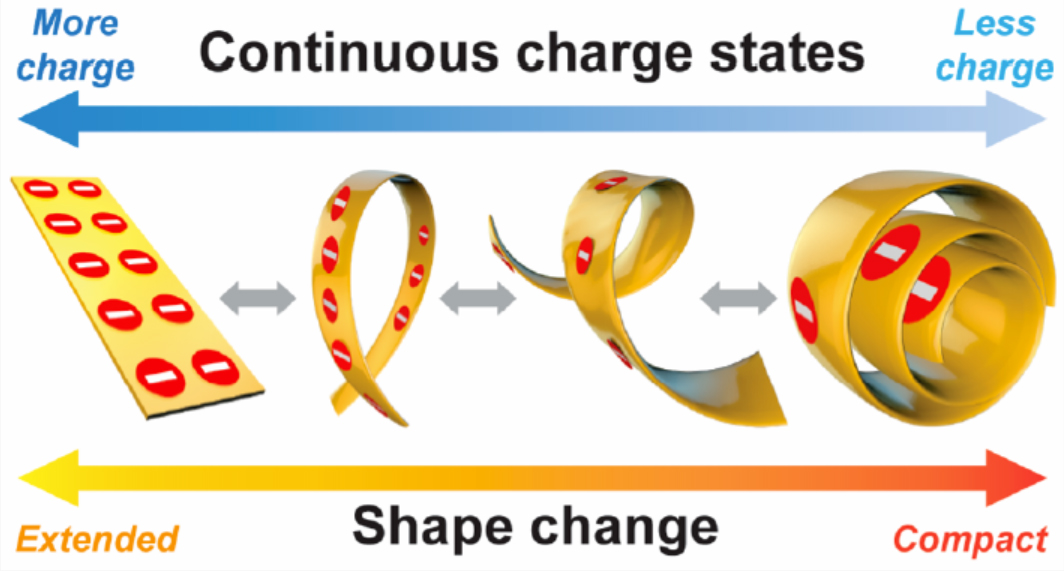
In the field of electrostatics, scientists have always regarded the amount of charge of a material as a property — or a state — of the material for more than a century ago (e.g., from the days of Michael Faraday). In other words, the amount of charge of a material can be measured precisely and specifically.
On the other hand, a separate field in science that has also been studied for a long time is the geometric transformations of shapes of materials in the three-dimensional space; this scientific field has fascinated scientists from a diverse range of backgrounds (e.g., materials scientists, physicists, mathematicians, and engineers) for centuries. There are currently many exciting fields of research that involve the change in shapes of materials. A few examples include stimuli-responsive materials, soft robotics, and 4D printing of active materials.
This study bridges these two old scientific fields — for the first time, we report that there is a relationship between geometry and electrostatic charge. We discuss that the charge of a material is actually a variable and depends on the shape of the material.
Experimentally, we demonstrated that by changing the shape of charged materials, the amount of charge of the materials changed. Materials with different shapes were investigated, including folded shapes, coils, and spirals. The shapes of these materials were transformed by either bending, twisting, or extending them (e.g., extending a 2-D spiral to a 3-D spiral). Our results showed that the changes in charge were continuously variable, reversible, and can be repeated many times as long as the shape changed. Therefore, there is a continuous range of charge states associated with every charged material depending on its shape. The phenomenon is general: we showed that the changes in charge occurred for different types of materials, different shapes of the materials, different transformations of the shapes, different ways of charging, and different ways of manipulation. Fundamentally, we showed that the changes in charge was due to a dynamic exchange of charge from the material to the surrounding atmosphere via the reversible ionization of the air molecules or the deposition of the ions on surfaces.
We further demonstrated that the changes in charge were also observed for self-actuating materials. Shape-changing materials (e.g., the class of “smart” materials, such as stimuli-responsive materials and shape memory polymers) have currently attracted a lot of attention from researchers due to their interesting functions.
In general, this fundamental physical-chemical phenomenon is important for a vast range of circumstances and applications related to the different types of changes in shape of charged materials. The changes in charge would need to be taken into account in engineering designs of the related devices (e.g., the class of flexible triboelectric nanogenerators, TENG, that are actively being researched currently). This phenomenon changes fundamentally our way of understanding charged materials and how we calculate the amount of charge. For example, it would be useful for students in elementary science courses to be informed about the phenomenon when they learn about the calculation of electrostatic charge of objects. This work is now published at ACS Central Science.
https://pubs.acs.org/doi/10.1021/acscentsci.9b01108?ref=pdf





